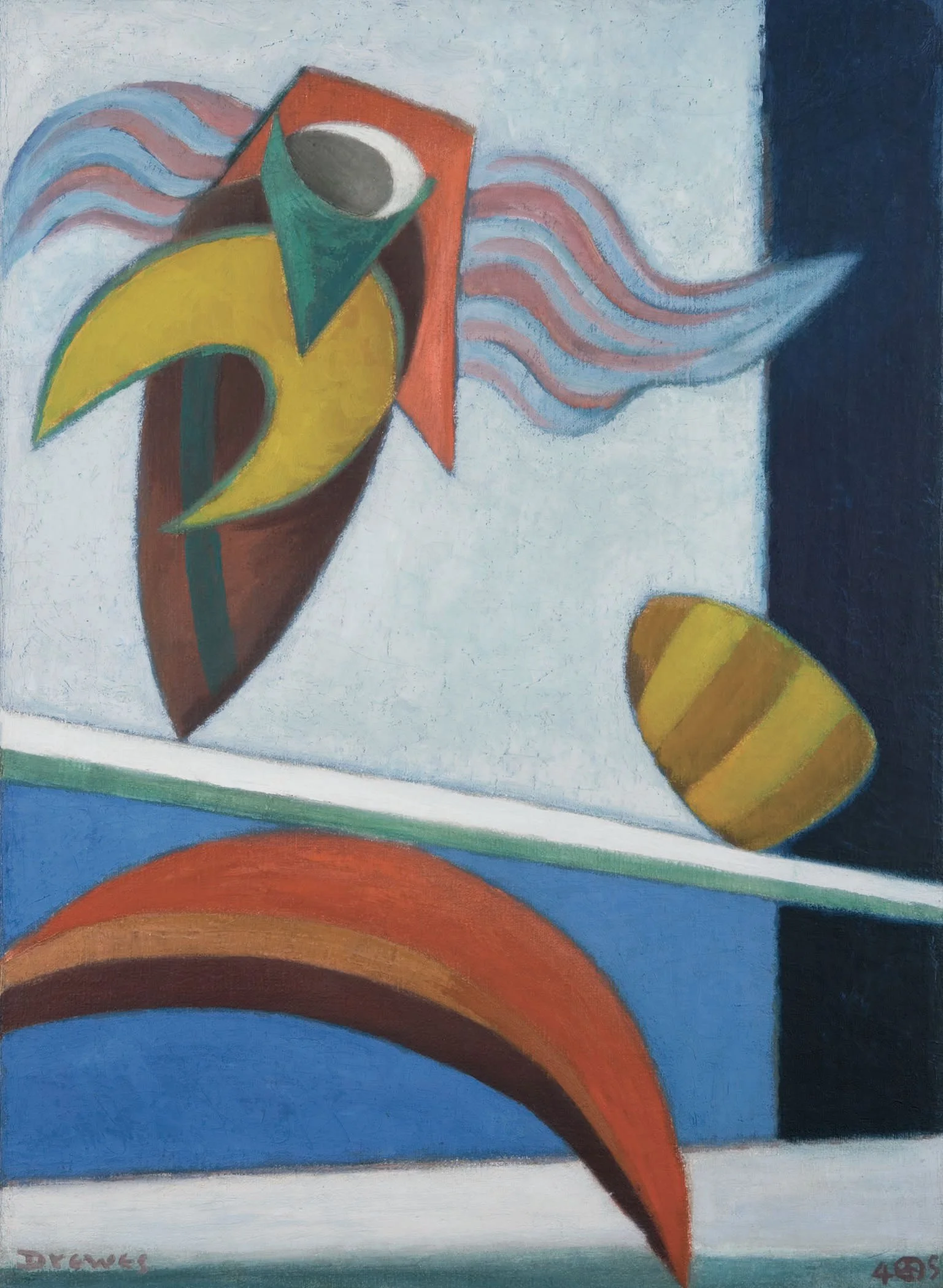WERNER DREWES (1899-1985)
Available Work | Biography
Biography • Werner Drewes (1899-1985)
Werner Drewes was an artist fascinated with the formal possibilities of line, color and the potential of thematic motifs. Drewes was born in the village of Canig in eastern Germany. He began formal training in architecture and design in Stuttgart following his service in World War I. From 1921 to 1922 he studied at the Bauhaus at Weimar, where he was a pupil of Johannes Itten, Paul Klee and Oscar Schlemmer. Drewes then traveled extensively through Italy and Spain to study the Old Masters then set out to travel around the world. In 1927 Drewes returned to Germany and continued his studies at the Bauhaus, which had moved to Dessau, as a student of Wassily Kandinsky and Lyonel Feininger. He also attended Hinnerk Scheper's mural tutorials and Kandinsky's private painting classes. Drewes and Kandinsky became lifelong friends and both shared the belief that art could be a means towards understanding the larger philosophical issues of life. In 1930 he moved with his family to New York, where he continued his active career, striving to exhibit his work widely.
In 1931 Kandinsky introduced Drewes to Katherine Dreier, cofounder of the Société Anonyme. Drewes then had his first of several exhibitions with the Société Anonyme, of which he would later become the vice president. From 1934 to 1936 Drewes taught drawing and printmaking at the Brooklyn Museum School and from 1937 to 1940 he was an instructor of painting and printmaking at Columbia University. In 1936 he became a founding member of the American Abstract Artists and in 1937 he became an American citizen and joined the American Artists' Congress. He also served as director of the WPA Graphic Arts Division in New York City in 1940 and 1941.
In 1944 Drewes became a member of Stanley William Hayter's Atelier 17 in New York, where he produced experimental intaglio prints. He then taught this technique as an instructor of design and printmaking at Brooklyn College. In the summer of 1945 he became an instructor at Moholy-Nagy's Institute of Design, also known as the "New Bauhaus," in Chicago. In 1946 Drewes accepted the position of Professor of Design at the School of Fine Arts of Washington University in Saint Louis. Drewes continued to teach at Washington University until he retired in 1965. While there he became good friends with Max Beckmann who was also on the University's faculty. The University held an exhibition of Drewes's work in 1979.
Drewes maintained an energetic schedule of printmaking, painting, and exhibitions from the 1950s through the 1970s, and his output was prodigious. In 1969, the National Collection of Fine Arts in Washington used its substantial holding of the artist's work to circulate Four Decades of Woodcuts by Werner Drewes. The 36 prints on exhibit, most of them brightly colored, were chosen from some 300 in the museum's collection. His series of ten woodcuts entitled It Can't Happen Here rendered in 1934 are some of the earliest totally abstract prints made in this country. The National Museum of American Arts (previously the National Collection of Fine Art) held a retrospective of Drewes's work in 1984. Drewes died in Reston, Virginia in 1985.
The work of Werner Drewes can be found in many public collections, including: the Museum of Fine Arts, Boston, MA; the National Gallery of Art, Washington, D.C.; the Smithsonian American Art Museum, Washington, D.C.; and the Fine Arts Museums of San Francisco, CA.




